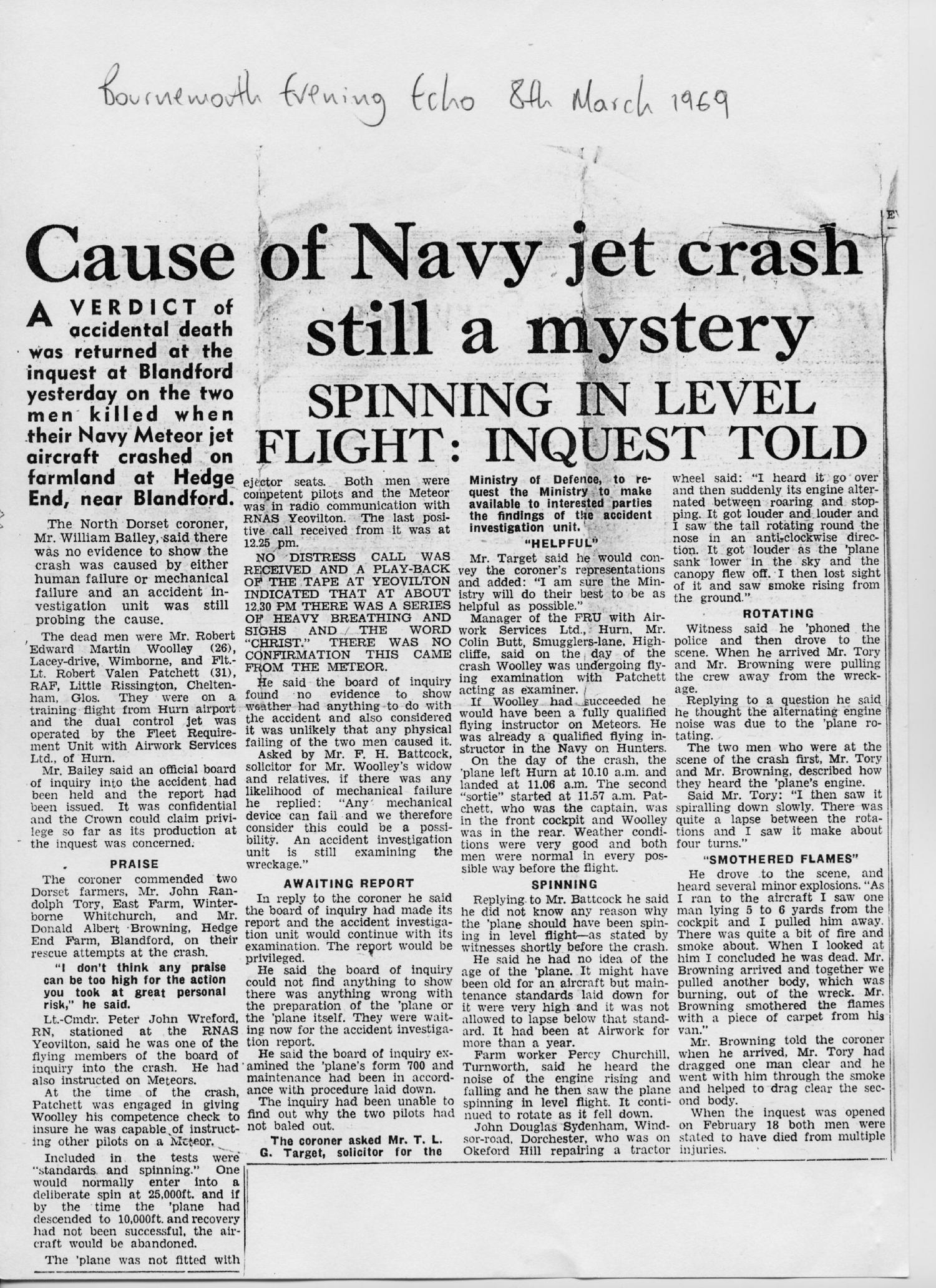REMEMBERING BOB WOOLLEY
By Mark Woolley
Part 3 September 1968 to February 1969
During the 1960s the Fleet Requirements Unit was operated by Airwork Services Ltd. and one of its principle tasks was the provision of aerial targets for the Royal Navy. Numerous missions were therefore flown in Meteor TT20’s and, to a slightly lesser extent, Meteor T7’s towing Rushton and Sleeve operated targets for the benefit of frigates such as HMS Rothesay and HMS Yarmouth and destroyers HMS Kent and HMS London out in the Channel.
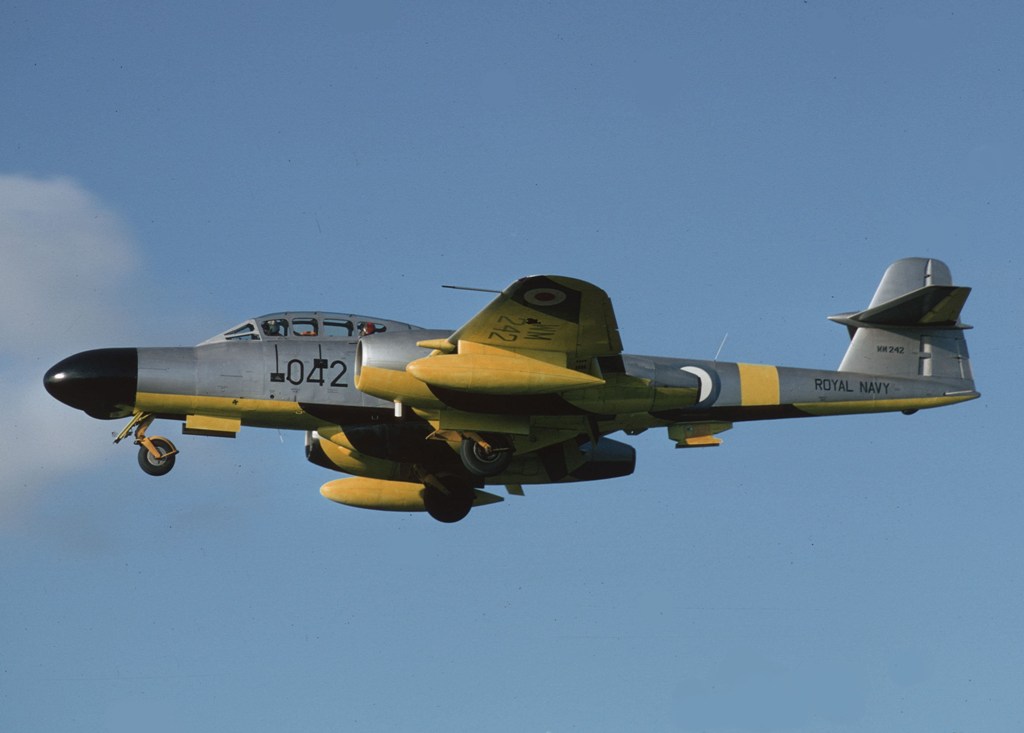
Above: Meteor TT20 no. WM242 of the Airwork Services operated Fleet Requirements Unit, Hurn Airport on 16th June 1969 (© Adrian Balch)
For more details on the history and activities of Airwork, from its formation in the 1920s to the present day, please click here.
And so to the fateful day of 13th February 1969. As indicated earlier, my father was already a Qualified Flying Instructor (QFI) in Hunters and bearing in mind the FRU’s intensive use of Meteors it made sense that he be passed out as a QFI in the Meteor. For this his examiner would be Flight Lieutenant Robert Patchett RAF and prior to the exam my father flew back to the CFS at Little Rissington in order to meet up with him. It was on the second day of his examination that the Meteor (T7 no. WL350) developed a flat spin and crashed on remote farmland near the village of Winterborne Houghton, approximately 20 miles south east of Yeovilton. Both aircrew were killed on impact. Two local farmers, Donald Browning and John Tory, had seen the Meteor spinning out of control and were quickly on the scene. Despite the risks to themselves, they attempted to rescue the pilots from the burning wreckage and both were later deservedly awarded the Queen’s Commendation for Brave Conduct by the Flag Officer Naval Air Command, Vice-Admiral Sir Richard Janvrin KCB DSC.
Both a Board of Enquiry and Air Accident Investigation Unit carried out their usual thorough examination of the accident but no pre-impact failures were detected and both were unable to conclusively determine the cause of the crash. Whilst the flights would at some point have included some asymmetric flying, simulated single engine failure and spin recovery, no one on the ground witnessed the aircraft before it entered its flat spin and no distress call was made. Whilst there was some speculation about the possibility of a control jam, most likely the elevator, the fact remains that ultimately we will never know what happened to whisky-lima-three-five-zero and two fine pilots on that cold winter day. Due to its pioneering place in British aviation history the Meteor was a challenging aircraft to fly and across the RAF and Fleet Air Arm there were 907 crashes involving the aircraft (890 RAF + 17 FAA) resulting in the death of 459 pilots and navigators\observers. Of the 641 Meteor T7s built no fewer than 204 crashed. A truly astonishing total which clearly would not be tolerated in today's society.
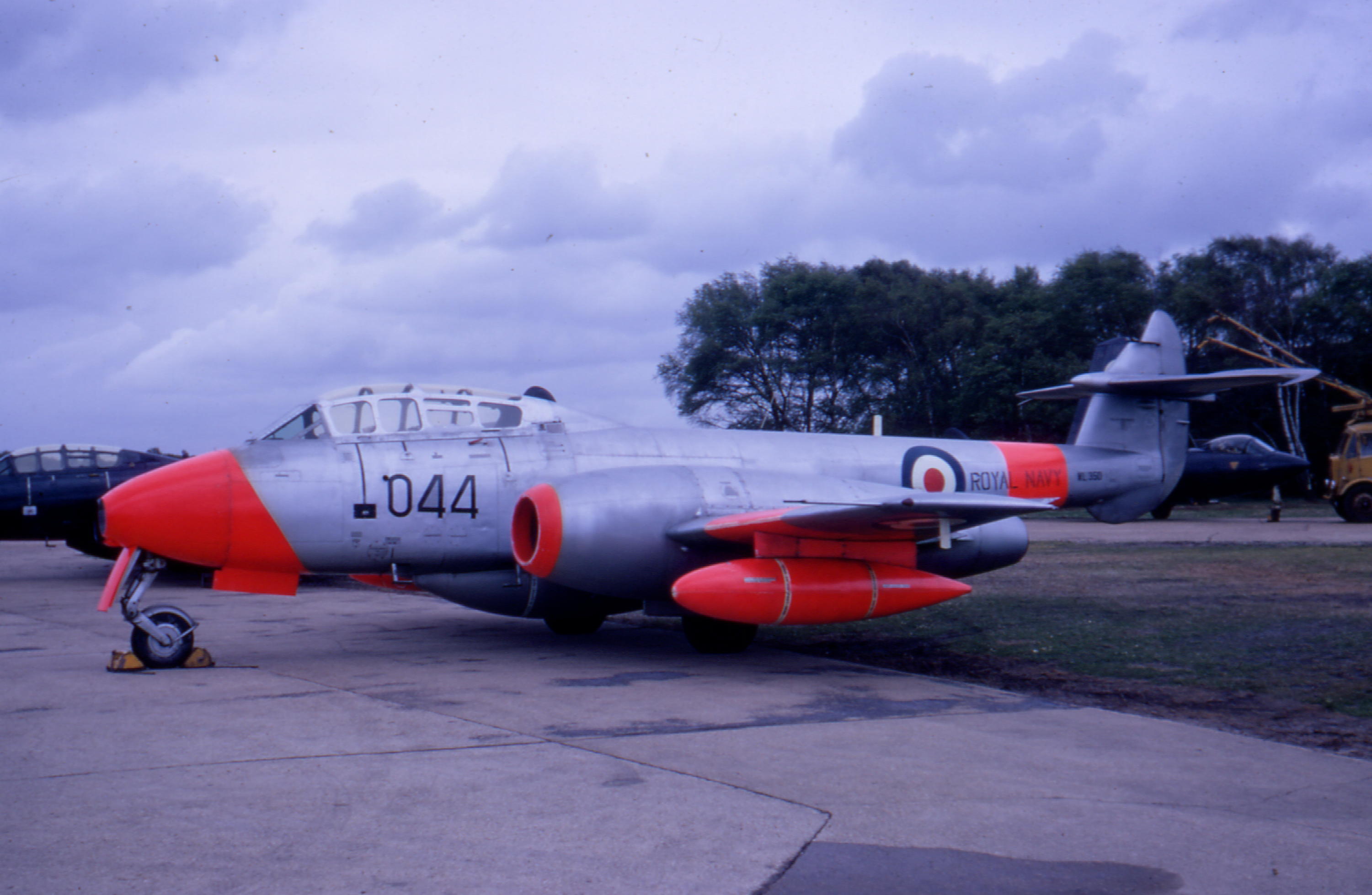
Above: the fateful Meteor T7 no. WL350 of the Fleet Requirements Unit photographed at Hurn on 10th May 1968 (© Adrian Balch)
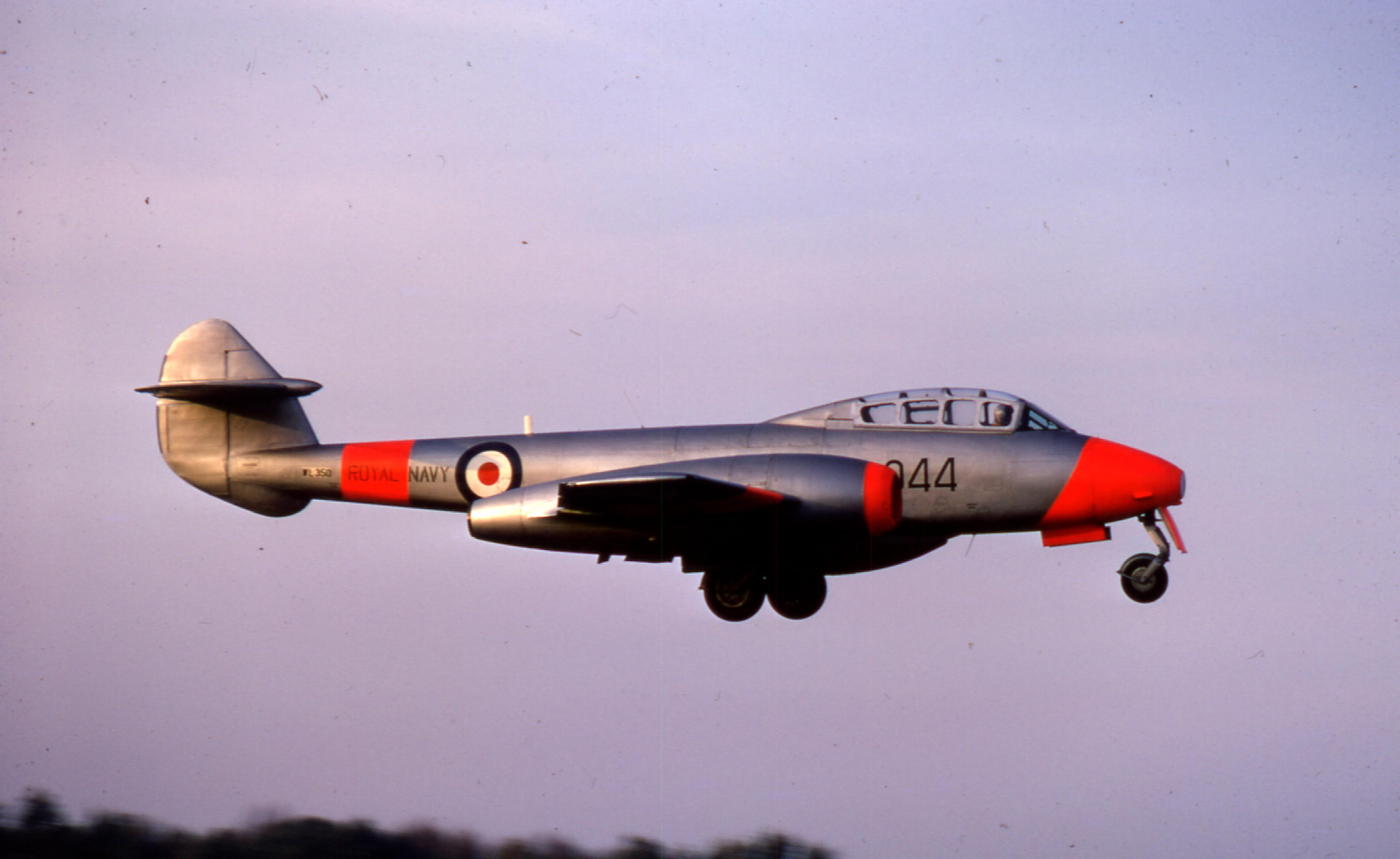
Above: WL350 seen approaching Hurn on 12th November 1968 (© Adrian Balch)
Above: A Bournemouth Evening Echo report 8th March 1969 concerning the inquest into the Meteor accident (click on image to open a larger scale copy)

Above: Royal Navy air crash investigators from RNAS Lee-On-Solent seen examining the wreckage of WL350 (© John Tory)
Above: The same view exactly 40 years after the accident on 13th February 2009 (© Mark Woolley)
The internet has revolutionised communication since the late 1990s and in 2007 I was delighted to be unexpectedly contacted by the sons of F/Lt Patchett - Rob and Mike. Both new very little about the circumstances of the Meteor crash I was happy to share the results of my research with them and to visit the crash site.
On Saturday 15th August 2009 family and friends of Bob Patchett and Bob Woolley gathered at the site of the crash to unveil a memorial dedicated to their memory. See BBC Web coverage of this.
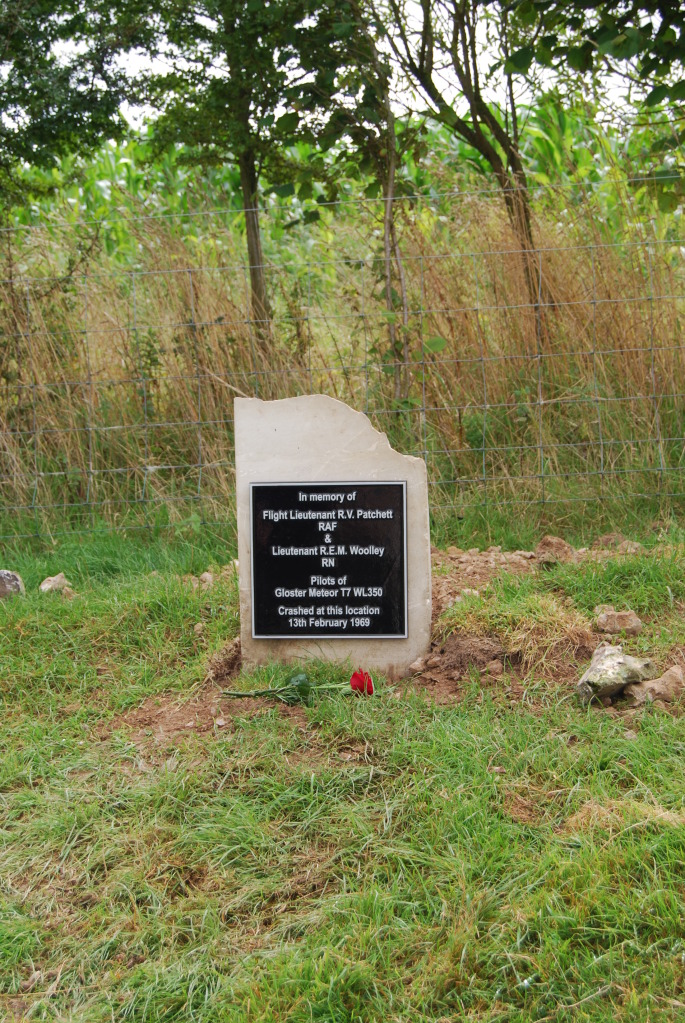
Above: The memorial to F/Lt Patchett and Lt Woolley following its unveiling on 15th August 2009 (© Mike Patchett)
‘What if’ is so often a futile thought in life but in the case of Bob Woolley it is hard to avoid. During his final months at Brawdy he had successfully studied for his Commercial Pilots Licence and at the time of his death there were outstanding applications to both Air Canada and Qantas. Four days before the Meteor crash, on 9th February, the Boeing 747 took to the sky for the first time, Two weeks later on 2nd March, Concorde 001 made its maiden flight. The future of civil aviation had never looked more promising.
The sortie in WL350 was also scheduled to be F/Lt Patchett's final flight with the CFS before he transferred to a different RAF squadron flying newly introduced McDonnell Douglas F-4 Phantoms. A brilliant career tragically cut short.
I am very grateful to the many officers, especially those from my father’s days with 893 and 759 Squadrons, who have kindly responded to my many requests for information and/or taken the time to speak with me during the preparation of this article. Particular thanks are due to: Greg Aldred, Chris Blower, Frank Craig, Mike Darlington, Neville Davies, Keith Leppard, Mac Melhuish, Gerald Prince, Bob Rance, Sir Mark Thomson, Graham Wilcock and Richard Wren. I am extremely grateful for your recollections and for your kind words about my father. I’m sure that if he were still alive my father would be keen to stress that his achievements were no greater than many others he served with. My view is of course totally biased and so it is really for his peers to judge whether this was the case or not.
To end on a lighter note I am pleased to report that my mother later remarried and I will always be grateful to Tony, my stepfather, for ensuring that most of my childhood was both stable and happy – things could have been very different. In view of the fact that I was only three years old at the time of my father’s death I would be delighted to hear from anyone who either remembers Bob Woolley or served in any of the Squadrons mentioned during the period of time described above.
A version of this article has previously been published in the SoFFAAM journal The Jabberwock.
Go to 'Remembering Bob Woolley - Part 1
Go to 'Remembering Bob Woolley - Part 2
Go to summary of Bob Woolley's Naval flying career
Page last updated: 12th September 2009
